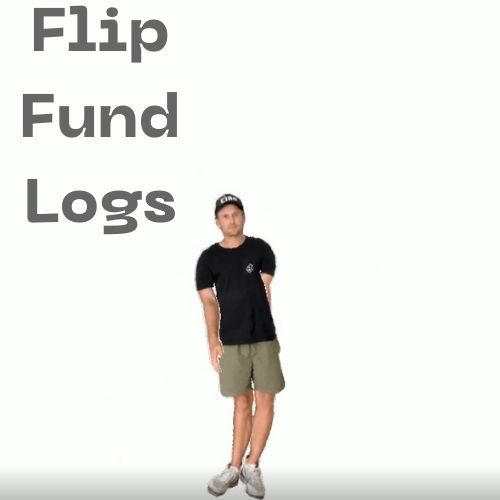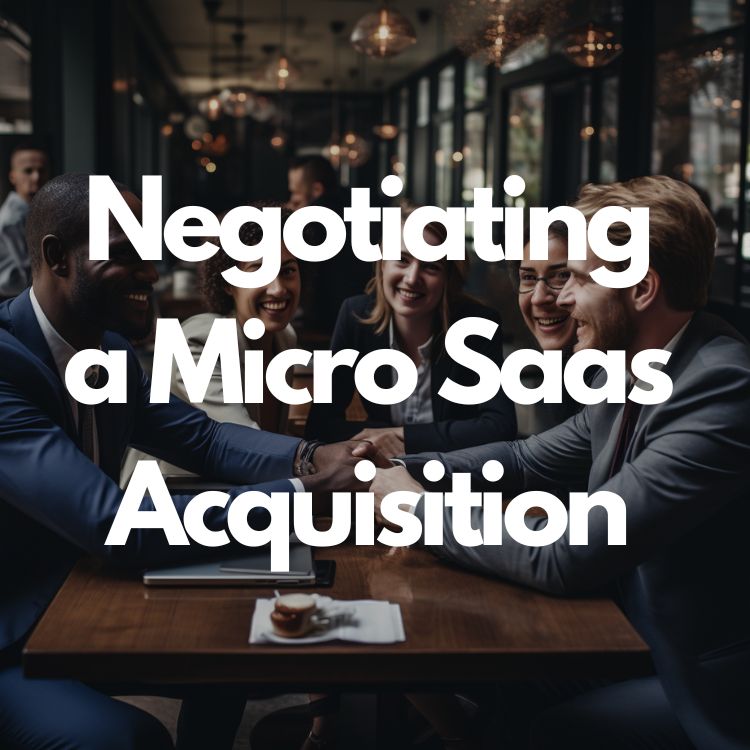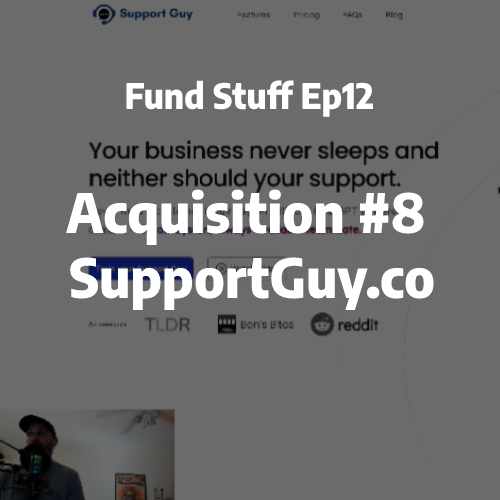Episode Transcript
So this week, I wanted to talk about a new concept. I'm calling a flip fund. The idea is basically you raise some amount of money to buy one company. You have a clear objective in this case, let's say doubling revenue and you try and sell it in 12 to 24 months. So a relatively short time horizon. So in the past, we tried to raise a fund for XO. I failed to do that. We have a blog post on it, titled failure to raise.
Most of the object objections were around. What percentage of my and Andrew's time will I be spending on the fund versus our current portfolio? People wanted to know if they would get mailbox money. I, e checks in the mail every month. Right because these things are supposed to cash flow Again, these people were thinking about it like real estate, but the, the math, just for the size of the stuff that we're doing, just doesn't work like that. They're actually just.
Isn't really any money left over every month. So the idea of sending mailbox money every month is like, yeah, you know, I wish we could do that too. You know, if we, if we could do that, we wouldn't be asking you if to, to go raise a fund. Right. We would just be doing this ourselves and have that flywheel where we buy a company It generates free cash flow. We accumulate that free cash flow to then buy other companies, et cetera. People also wanted to know how they get their money out. And then how long will the fund last, how they get, how do they get their money out? So. on a, On a fund. It's clear you, you don't until the fund exits the at the fund has a time horizon and venture. It's like 10, 12 years.
These days, maybe it's a little bit longer as companies stay private longer. Who knows. So getting your money out is really challenging unless you have some way to like bring in new investors that can buy out old, old investors, et cetera. How long will the fund last again? Nobody likes it to last, you know, 10 plus years. That's just a really long time horizon.
So those were most of the objections that I got when we went to go try and raise a fund a first time. And I think this flip fund concept is one fun two, I think it kills most of the objections, right. Because when do you get your money out? 12 to 24 months? What is the objective Well, we're doubling, we're trying to double revenue. And how much are you raising or what are you gonna do with the money we're gonna buy one company? Right? So we would, in this case, if this were a pitch from us, say, okay, we're gonna put in 10 to 20% of the capital.
So in a million dollars, we would put in a hundred or 200 grand. There would be 20% carry. This is our. Incentive basically for doing this no management fees, exit in 12 to 24 months. Sometimes it might take us only 12 months and we wanna sell it quickly. Sometimes it might take us a little bit longer or it's doing well. Right. And we just want to accumulate that, but even if we're leaving money on the table, particularly for the first one, I think it would be wise for us to just.
Do the deal, sell it in 12 ish months or on the closer end of 12 in that 12 to 24 month range. So it's month, 12, 13, 14, just to close it and have a realized exit. So that you can get some real dollar. Amounts like on a pitch deck and say, listen, here was our first one. Here's the actual performance It's exited these dollars are all real. These aren't, you know, kind of VC valuations. This was real money that hit the bank account, and this is how much we returned to investors. And here's how much we had in profit. So the advantage again is a two year investment commitment versus like a 10 year traditional venture commitment.
There would be no distributions again, see above mailbox money. just doesn't happen for tiny SaaS companies. You just wanna reinvest basically everything into growth. Sometimes that means ads. Sometimes it means people or content or whatever. But there's absolutely no money coming back to the investors during that 12 to 24 month period, 100% will be reinvested.
If for some reason there is some c cash from, i, I don't know, some, some, some profit in the LLC LLCs are passed through entities. So it would just be pro rata to all the investors. And then for us, of course, we've done this nine times seven of which have more than doubled in revenue. One of which is 10 X in revenue. So we.
Bought it at like it was making 500 bucks a month and now it makes over 5,000. And yeah, so this is kind of how I would pitch this flip fund concept. I haven't seen really anybody do this in real estate. This is called the fundless sponsor model. Sort of, but again, the difference here is that you would explicitly be buying a software company to flip it. Right. We would intentionally be and be very open about selling this thing in 12 to 24 months. And, and see if that takes, hold.
are of course, all kinds of risks and, you know, the documents would have to be relatively long in the cases of what happens if we bought something bad and how do we vote on things and all that stuff would need to be taken care of. But I think overall it'll be, it would be very interesting to figure out how to make this work and give this a shot.
What some of that risk mitigation looks like in our past when companies weren't performing as expected or we just changed strategies or something, just wasn't working for us. Like, you know, the the, the, the code wasn't up to quality, or we realized how much work this was gonna be, or customers are taking up too much time on customer support in the past. Basically, we've just sold those off as quickly as possible. Once we recognize it's not a good investment for us, and we just try and recoup our, our cash, and maybe that means shutting down the LLC, that's the cleanest way to do it.
And then you just start a new one and see if people want to. Come along for the ride again. Yeah, Because again. for us, we've never raised any money, so it's just our own cash so far. And eventually that's gonna run out, we're looking at a high six figure deal. Now that'll be most of our cash. Like most of the cash that we have, and we'll just have to kind of wait and see if we can generate profits now from the portfolio that we have focus on growing it.
And then of course, try and figure out how to. Make more money ourselves and, and, and redeploy that into the business. Or we're gonna have to do something like raise a fund, which again, see above has had some objections that I don't quite know how to overcome. I know obviously people do end up raising funds and people are very successful at it. But for us, with some limited amount of network, it's been quite difficult to get people to sign on for us having discretionary capital.
I mean, this was raising discretionary capital is always a pain in the ass. and it's always the most difficult type of raise. However, at this point we do have some history, a couple years of history to point to. And and maybe the next time around, if we do go to try and raise a fund, that would be helpful. But this flip fund concept is something fun and something we, we may end up trying, of course this isn't investment advice. We're not selling securities. This isn't, we're not, there is no fund to raise for. We're not, we're not raising any, any capital at the moment, but yeah, it's a really fun concept.
Let me know what you think.


